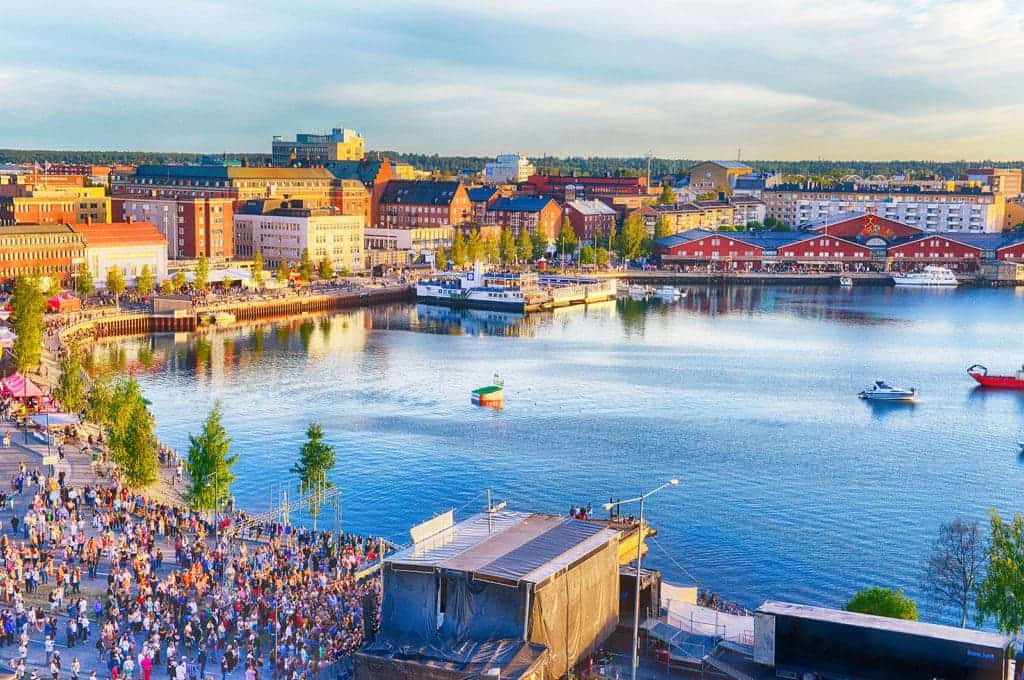
One of the biggest consequences of man-made climate change is sea level rise. On average, sea levels are rising at a rate of more than 3 millimeters (mm) a year, bearing serious repercussions for human health and the economy, particularly in coastal regions which are most vulnerable. And because our planet isn’t a bathtub, in some places the sea level is rising two or three times faster than average. For instance, by 2030 sea levels could be 431 mm (17 inches) higher, with the highest rise at Mayport, Fernandina Beach, and Daytona Beach. People living around China’s Yellow River delta are swamped by sea level rise of more than 250 mm (9 inches) a year.
Sea levels aren’t rising everywhere, though. In fact, in some places like Scandinavia, they’re dropping.
Namely, Finland and Sweden’s landmass is rising by 3 to 9 mm each year due to a geological process known as the post-glacial uplift, which started 10,000 years ago when the last Ice Age ended. And although it may look like these Scandinavian countries have nothing to worry about, sea level drop is causing all sorts of problems.
But first, a few words about what’s causing this peculiar drop in sea level while the rest of the world seems to be drowning.
A rubber mattress
Some 50 miles below our feet lies a viscous layer thousands of miles thick known as the mantle — the thickest layer of the Earth. On top of the mantle, tectonic plates float like a cake on a pudding. If you put some more sweets atop of the cake, it will start sinking into the pudding. Likewise, more weight on the crust, such as billions of tons of ice that collect during an ice age, will cause it to sink more into the mantle. Now displaced, the mantle will bulge elsewhere. When the extra weight is gone, such as in the aftermath of an ice age when all those excess glaciers melt, the mantle rebounds — it still does to this day after thousands of year. It’s much like a foam rubber mattress, in the sense that it takes a while to return to its original shape.
This post-glacial uplift is what’s overly compensating for sea level rise around the Scandinavian coastline and locals are plainly aware of this fact. “The conditions for sea transportation in the area is getting more tricky,” says Sven Knutsson, professor of soil mechanics at Lulea University of Technology, told journalist Jon Bjarki Magnusson.
For instance, the port of Lulea located in northern Sweden is getting shallower which is causing problems for larger ships attempting to enter the port, problems that were non-existing 40 years ago. Since then, the land has risen by about half a meter. In one spot, Sweden’s coastline has risen 300 meters since the Ice Age ended about 10,000 years ago. Local authorities are investing about $208 million to deepen the harbor.
The uplift is also ruining Swedish lakes. Once pristine and crystal clear, many of Sweden’s shallower lakes are now becoming murky and muddy as more and more grass grows around them. There’s not much to do in this case as any attempt to deepen the lakes simply makes no economic sense.
In Western Finland, ironically, the sea level drop is causing floods. Because the crust is rising non-uniformly, namely faster by the coastline than further east, rivers have become tilted. During the spring when Finland’s big rivers are packed with meltwater, the surroundings get flooded.
On the flipside, at least these countries are getting bigger. It’s estimated the uplift is helping Finland gain 700 hectares of land every year as its western coastline is gradually rising. Theoretically, this newly surfaced land is owned by the state but owners who have adjacent land can claim it. Already, there are feuds between residents with some ending in court.
Of course, all of these problems aren’t nearly as bad as the threats faced by people living in coastal areas all over the world. Sea levels are rising at an increasing rate each year and as the planet heats more, as it does today, this rate will only accelerate. Sea levels are rising 50% faster than they did two decades ago, according to a recent 2017 study which attributed the acceleration to Greenland’s melting ice sheet. If this trend continues, Scandinavian countries but also other places like Scottland could actually see the sea level fall by as much as 50 meters.






